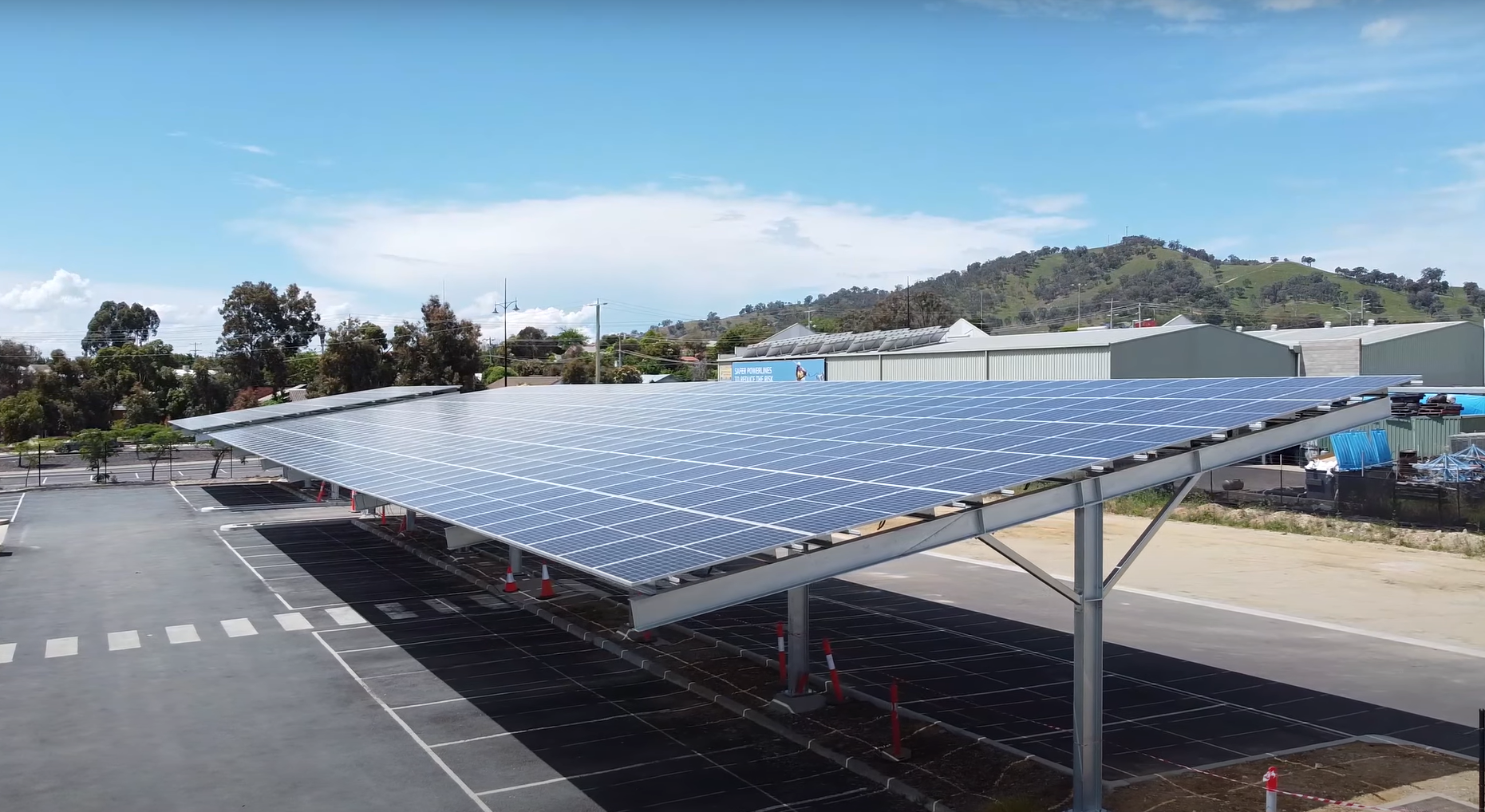
North East Water is a water utility, headquartered in the regional Victorian city of Wodonga, servicing an estimated 110,000 people across 39 towns.
Recently North East Water has added a 330 panel, 132kW solar array, positioned over the main car park. Not only will the solar carpark capture as much as 500kWh of energy per day, but also provides shade and shelter to cars parked underneath.
As you can see from the structure supporting the mini solar farm, creating this is actually a serious engineering challenge. Not only is important to secure the weight of the panels, but these also need to be positioned at the optimal angle to maximise solar collection. The supports also need to withstanding weather events like strong wind.
Solar carparks are becoming increasingly common in Australia, with North East Water’s the latest in a growing list around the country.
- Sydney Airport (550kW)
- Sydney Markets (170kW)
- University of Southern Queensland (1.1MW)
- Dunsborough Centrepoint Shopping Centre (440kW)
- Vicinity South Australia (3.2MW)
Increasingly businesses are calculating the potential energy savings over the long term and seeing the business case stacks up for a return on the investment.
This model of adding solar above carparks is such a win-win that as a country, we really should look to commercial developments making this the standard when building out parking areas.
As we know, using power close to the source of capture reduces the losses involved in transmitting power. In an ideal world, we’d see solar carparks complemented by electric vehicle recharging infrastructure, also minimizing the demand on the grid.
For North East Water, this project is another step towards the Corporation’s journey to being carbon neutral by 2050.
“The 132kW system will provide 50% of the buildings energy use. On average, the 330 panels will generate 500kW per day on top of the rooftop panels already in place.
This is a $400,000 investment with an expected 20 year lifespan on the panels and scope to increase the system size in future years if needed.
One of the great things about this project is we’re getting free energy from the sun, but also incorporating shade protection for the carpark as a bonus.
We’re proud of our commitment to reducing the organisations carbon emissions, and this project joins many others in our capital works program to help tackle climate change.
They include a large-scale solar installation to power the Wodonga sewage plant as well as smaller regional projects incorporating more efficient design, equipment and operating processes.”
Managing Director Craig Heiner
Check out this drone video of the new solar carpark, ready for the Australian summer.

Energy production is measured in kWh not kW. Carbon neutral? I suppose they mean carbon dioxide neutral, unless they unleash a war on graphite. It’s hard to take this press release seriously when they can’t even get basic terminology right. Just another taxpayer funded utility virtue signaling at our expense. I notice there are never articles about how much money was actually saved looking back at how much was actually spent. Just notices about how much is going to be saved if only they can have more handouts.
Thanks Elvis, have updated to kWh, just a typo. Personally I have a 6.5kW solar system with a 5kW inverter. Made 30.99kWh today.
Many commercial projects have longer payback periods than households, given the larger investment, so it’s early to get data on expected vs Actual paybacks. In the next few years this should serve as good content.
As long as the payback period is shorter than the life of the panels, solar economically will make sense.
Clearly with so many solar projects in Australia and around the world, the numbers make sense for many businesses.
After getting solar on my home back in Feb, like 2.5 Mil other homes in Aus, were already seeing savings that suggest our roi will be faster than predicted, 3-4yrs.